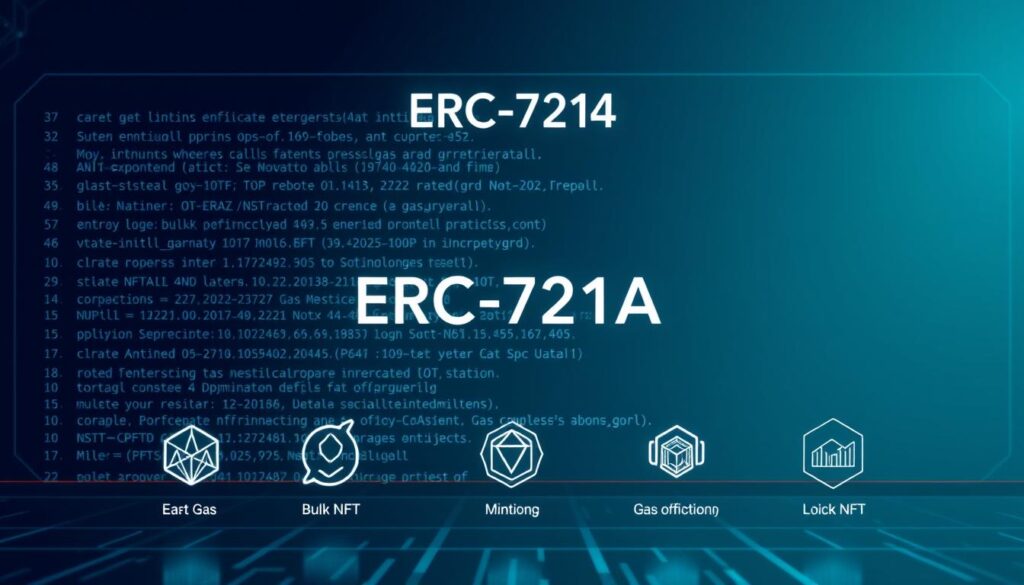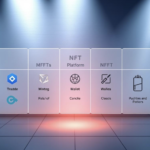Now Reading: Digital Art NFT Minting Platform Tutorial for Beginners
- 01
Digital Art NFT Minting Platform Tutorial for Beginners
Digital Art NFT Minting Platform Tutorial for Beginners

The way we buy, sell, and own unique creations is changing fast. Non-fungible tokens (NFTs) let creators turn their work into verifiable assets using blockchain networks. This shift empowers artists to protect their originality while connecting directly with supporters worldwide.
This guide breaks down the process for newcomers. You’ll learn how to transform your ideas into tradable items securely stored on decentralized ledgers. We’ll simplify technical jargon and focus on actionable steps anyone can follow.
Blockchain’s transparency ensures every piece has a clear history. Collectors gain confidence knowing their purchases are authentic. For makers, it’s a chance to earn fair rewards without middlemen.
The landscape keeps evolving, offering fresh ways to engage audiences. Whether you’re crafting illustrations, animations, or multimedia projects, understanding these tools unlocks new possibilities. Let’s explore how to navigate this space confidently.
Key Takeaways
- Blockchain technology provides proof of ownership for unique creative works
- Essential steps include wallet setup, file preparation, and metadata creation
- Popular networks offer different environmental and cost considerations
- Smart contracts automate royalties for ongoing artist compensation
- Market trends show growing collector interest in diverse media formats
- Gas fees and marketplace commissions impact overall profitability
- Community building enhances visibility in decentralized ecosystems
Understanding Digital Art NFTs
Modern creators now have tools to protect their work like never before. At the heart of this movement lies a technology reshaping how we value creative expression. This system proves who made what – and who owns it – in ways that can’t be faked.
What Are NFTs?
Non-fungible tokens act like digital certificates for one-of-a-kind items. Each contains special codes that make it different from others, even if they look similar. These codes live on blockchain networks, creating permanent records of authenticity.
Think of them as birth certificates for creative files. A painting’s original version gains value because it’s unique – NFTs bring that concept to the online world. This non-fungible tokens guide explains how they turn ordinary files into collectible assets.
Unique Attributes of Digital Art
These tokens solve a big problem: endless copying. By linking creations to blockchain records, they create artificial scarcity. Artists can now sell limited editions or single pieces, just like physical galleries.
Owners get more than just bragging rights. Smart contracts can send automatic payments to creators with each resale. Interactive elements add depth too – imagine artwork that changes based on weather data or viewer input.
Not all rights transfer with purchase, though. Buyers typically own the token, not the copyright. Clear agreements help both sides understand what’s being traded in these groundbreaking transactions.
Blockchain Technology and NFT Minting
Blockchain’s immutable ledgers are transforming how we authenticate unique assets globally. This technology acts as a public notebook that records every action, visible to all participants but controlled by none. When creating tokens, the process embeds permanent identifiers into decentralized systems, establishing clear ownership trails.
Distributed networks eliminate single points of failure. Each transaction gets verified across multiple computers, making records resistant to alteration. Popular chains like Ethereum use smart contracts – self-executing agreements that manage royalties and transfers automatically.
Cost factors vary significantly between platforms. Solana and Polygon often process actions faster with lower fees than older networks. Timing matters too – network congestion during peak hours can delay confirmations.
The ledger’s permanence benefits both creators and collectors. Provenance tracking becomes effortless, showing every exchange from initial creation onward. This transparency builds trust in markets where authenticity is paramount.
Energy consumption remains a consideration. Some chains use eco-friendly validation methods, reducing environmental impact. Choosing the right network balances speed, cost, and sustainability for your goals.
Setting Up Your Digital Art Wallet and Network
Securing your creative assets begins with the right tools in the blockchain space. A specialized storage solution acts as your gateway to managing and transferring unique items across decentralized systems. This foundation ensures you maintain control while interacting with global markets.
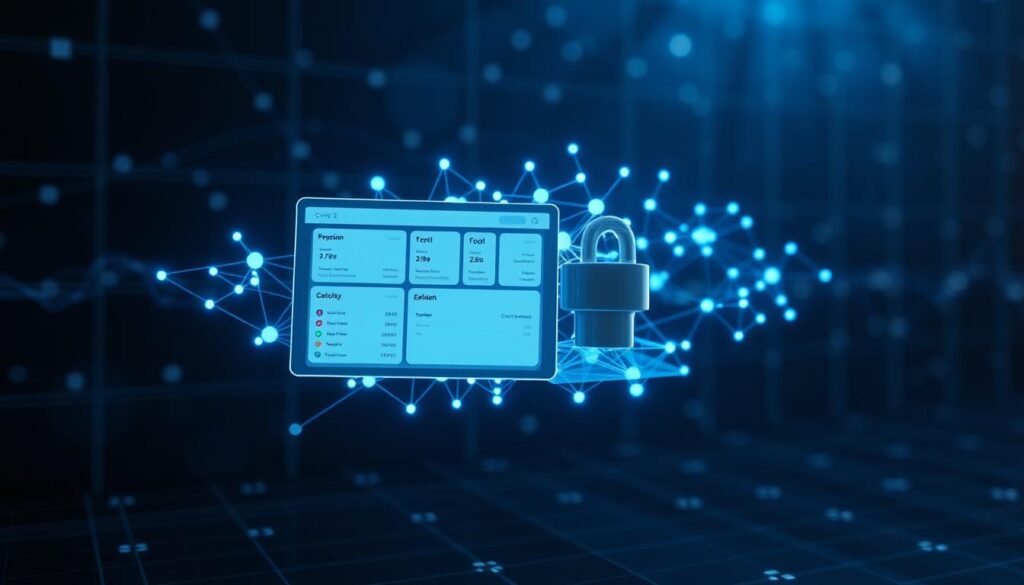
Creating Your Crypto Wallet
Choose a crypto storage tool compatible with your chosen chain. MetaMask dominates Ethereum transactions, offering browser and mobile access. During setup, you’ll receive a 12-word recovery phrase – guard this like your social security number.
Enable additional protections like two-step verification for added safety. Consider hardware options for valuable crypto assets, keeping most holdings offline. Hot wallets work better for frequent trades, while cold storage suits long-term collections.
Connecting to the Blockchain Network
Linking your wallet requires specific chain details. You’ll input network names, RPC URLs, and unique identifiers from official sources. These settings ensure proper communication between your tool and the distributed ledger.
Fuel your account with cryptocurrency purchased through exchanges. Convert these funds to network-specific tokens for transaction fees. Different networks have varying gas price structures – monitor rates during off-peak hours.
Navigating the Kaleido Platform
New creators often face technical barriers when entering the blockchain space. Kaleido removes these hurdles with streamlined tools that prioritize accessibility. Its design lets anyone establish their presence without coding expertise or complex configurations.

Account Setup and Environment Creation
Begin by registering with an email and password. The dashboard appears immediately, offering clear navigation to network setup. Choose a unique name for your blockchain instance – this becomes your creative hub.
Select cloud regions based on your audience’s location. Options span AWS and Azure data centers, ensuring low latency for global interactions. The system handles backend infrastructure automatically.
Pick the Ethereum environment from available templates. Providers offer varying performance levels – most starters select default settings. Node configuration uses preset “small” and “signer” options, balancing speed with affordability.
Three key advantages emerge here:
- Zero transaction fees for creating and transferring tokens
- Built-in storage solutions replace external systems
- Smart contract templates automate royalty management
This approach lets creators focus on their work rather than technical details. Changes appear in real-time through the visual interface. Within minutes, your personalized ecosystem becomes operational.
Digital Art NFT Minting Platform Tutorial
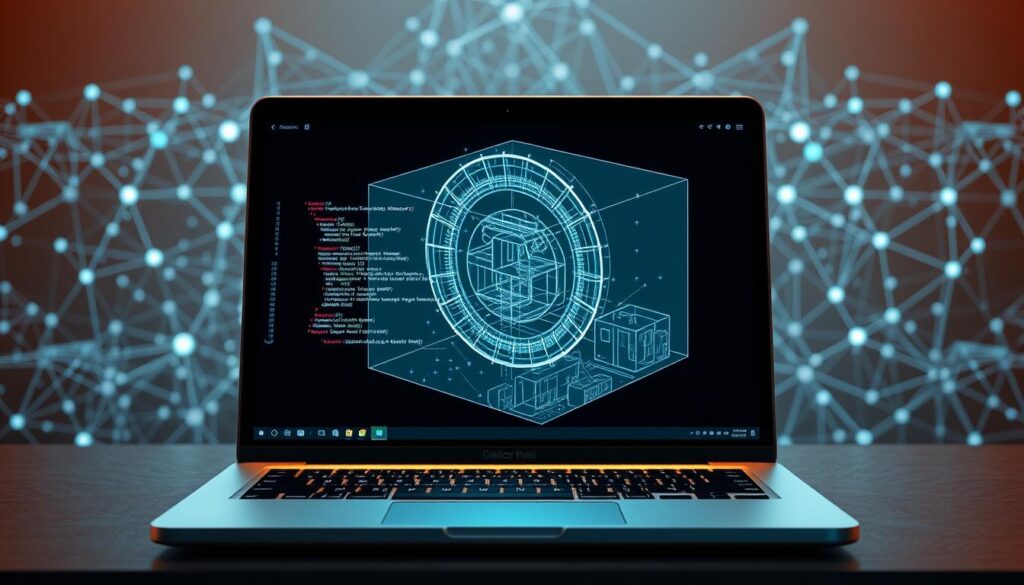
Establishing a unique collection starts with foundational blockchain operations. These actions transform creative files into traceable assets with verifiable ownership. Let’s break down the core actions required to launch your collection.
Deploying an ERC721 Token
Begin in Kaleido’s dashboard under Digital Assets > Tokens. Two contract options appear:
- KaleidoERC721Mintable for standard collections
- KaleidoERC721MintableBurnable for removable items
Name your token collection carefully – this becomes its public identity. Symbols should be 3-5 letters for easy recognition. Deployment finalizes your contract’s blockchain registration.
Minting Your First NFT
After contract activation:
- Select your verified wallet credentials
- Input distinct numerical IDs for each piece
- Attach metadata URIs describing content details
Token IDs act like serial numbers – duplicates cause system errors. Metadata links connect your files to blockchain records, making details visible across marketplaces.
Confirm each transaction promptly. The platform displays real-time status updates during confirmation phases. Successful mints appear in your wallet within minutes.
Understanding Gas Fees and Transaction Costs
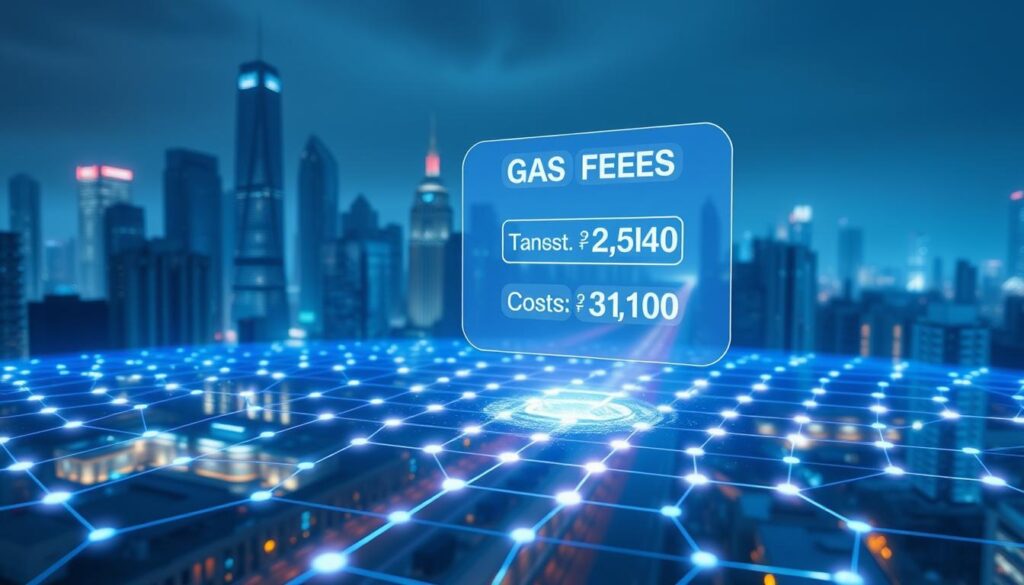
Managing blockchain operations demands awareness of hidden expenses. Gas fees act as fuel for processing actions across decentralized networks. These payments reward validators who secure transactions through computational work.
Ethereum’s pricing fluctuates with demand. During peak times – like popular drops or market shifts – costs can spike 300% within hours. Alternative chains like Polygon charge fractions of a cent per action, making them budget-friendly options.
| Network | Avg Gas Fee | Speed | Energy Use |
|---|---|---|---|
| Ethereum | $5-$150 | 3-5 min | High |
| Polygon | $0.01-$0.05 | Low | |
| Solana | $0.00025 | 2-5 sec | Very Low |
| Kaleido | $0 | Instant | Neutral |
Marketplaces add extra charges. Traditional platforms take 2.5-15% commissions plus gas costs. This eats into profits, especially for small projects. Some networks offset this with built-in royalty systems.
Smart timing saves money. Batching multiple actions during low-traffic periods (late nights or weekends) reduces fees. Tools like gas trackers help predict optimal moments for cost-effective transactions.
Kaleido’s fee-free model removes barriers for newcomers. Creators avoid upfront costs while testing concepts. This approach encourages experimentation without financial risk.
Exploring NFT Metadata and IPFS Storage
Every blockchain-based creation requires robust documentation to maintain its identity and value. Metadata acts as a permanent record detailing essential characteristics, while storage solutions ensure lasting accessibility. Together, they form the backbone of verifiable ownership in decentralized ecosystems.
Best Practices for Metadata
Descriptive titles and detailed explanations help collectors understand what makes your work unique. Include creation dates, artist backgrounds, and special traits using standardized JSON formats. This structure ensures compatibility across wallets and marketplaces.
High-quality preview images showcase your work effectively. Tags and categories improve discovery – think like a curator organizing gallery exhibits. Avoid vague terms like “abstract01” in favor of specific descriptors that highlight your creative vision.
Leveraging IPFS for Decentralized Storage
The InterPlanetary File System replaces vulnerable central servers with global node networks. Each upload receives a content identifier – a fingerprint proving file authenticity. This system prevents unauthorized alterations while maintaining permanent access.
Kaleido simplifies this process through integrated storage tools. Their automated handling of hash links and node distribution removes technical hurdles. Files remain available even if individual providers go offline, thanks to redundant backups across multiple locations.
Adopting these practices future-proofs your creations. Collectors gain confidence knowing both the artwork and its provenance will endure. Proper implementation turns temporary digital files into lasting cultural artifacts.
Ensuring Security for Your NFT Creations
Protecting your blockchain-based assets demands proactive strategies. While decentralized ledgers inherently secure ownership records, creators must address vulnerabilities at every interaction point. Your wallet acts as the first defense layer – use hardware storage for valuable collections and enable multi-factor authentication.
Choose platforms with enterprise-grade security protocols for token creation. Established providers conduct rigorous smart contract audits and penetration testing, ensuring robust protection against exploits. For those building custom solutions, secure NFT creation frameworks offer verified templates and real-time threat monitoring.
Ownership verification relies on blockchain’s immutability, but metadata storage requires equal attention. Use encrypted decentralized networks rather than traditional cloud services. Regular software updates and transaction confirmations prevent unauthorized access during transfers.
Cross-chain compatibility introduces new risks. Verify network configurations when expanding to multiple ledgers. Layer-2 solutions balance speed with security through advanced validation methods. Stay informed about emerging threats – the landscape evolves faster than most realize.




